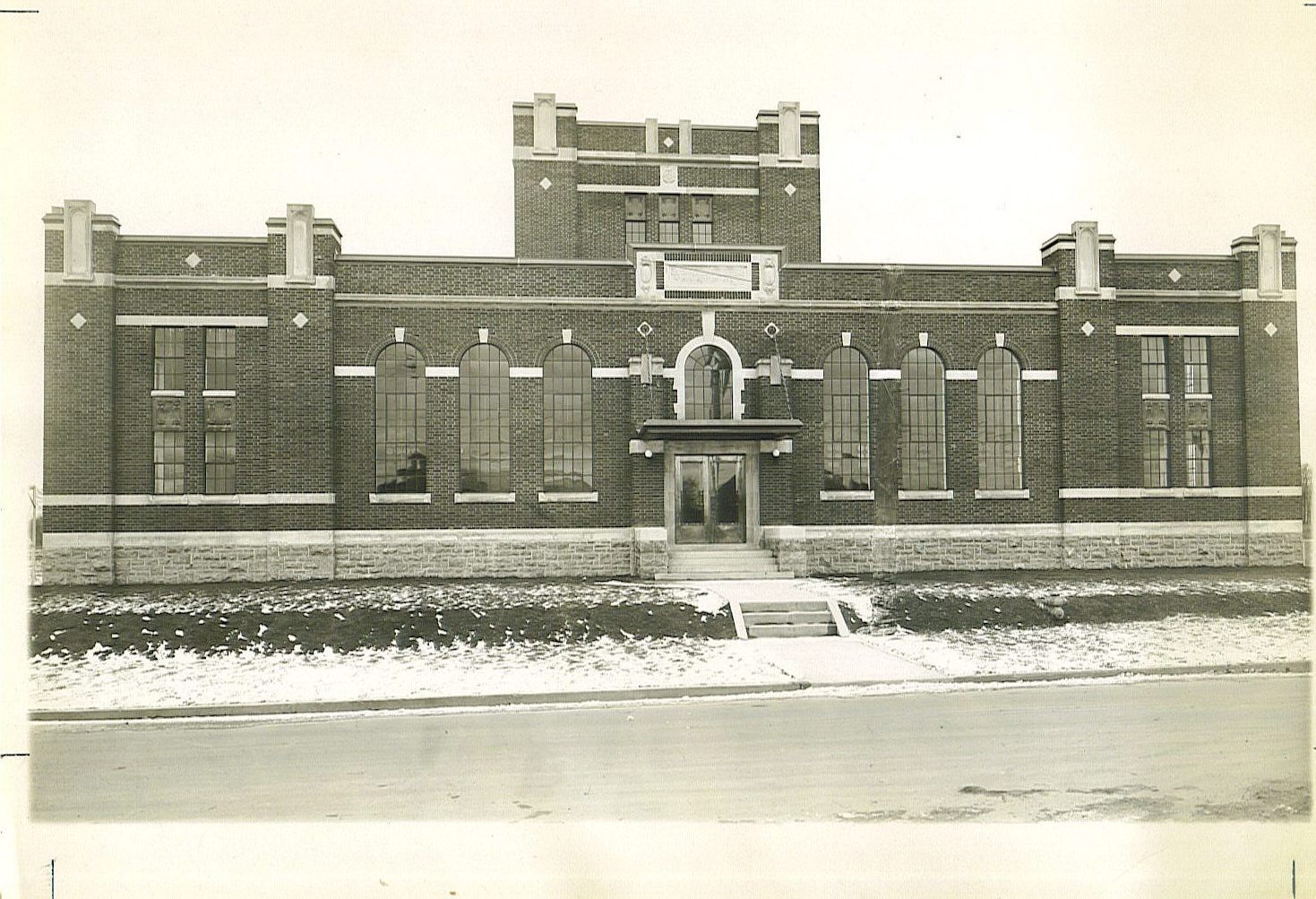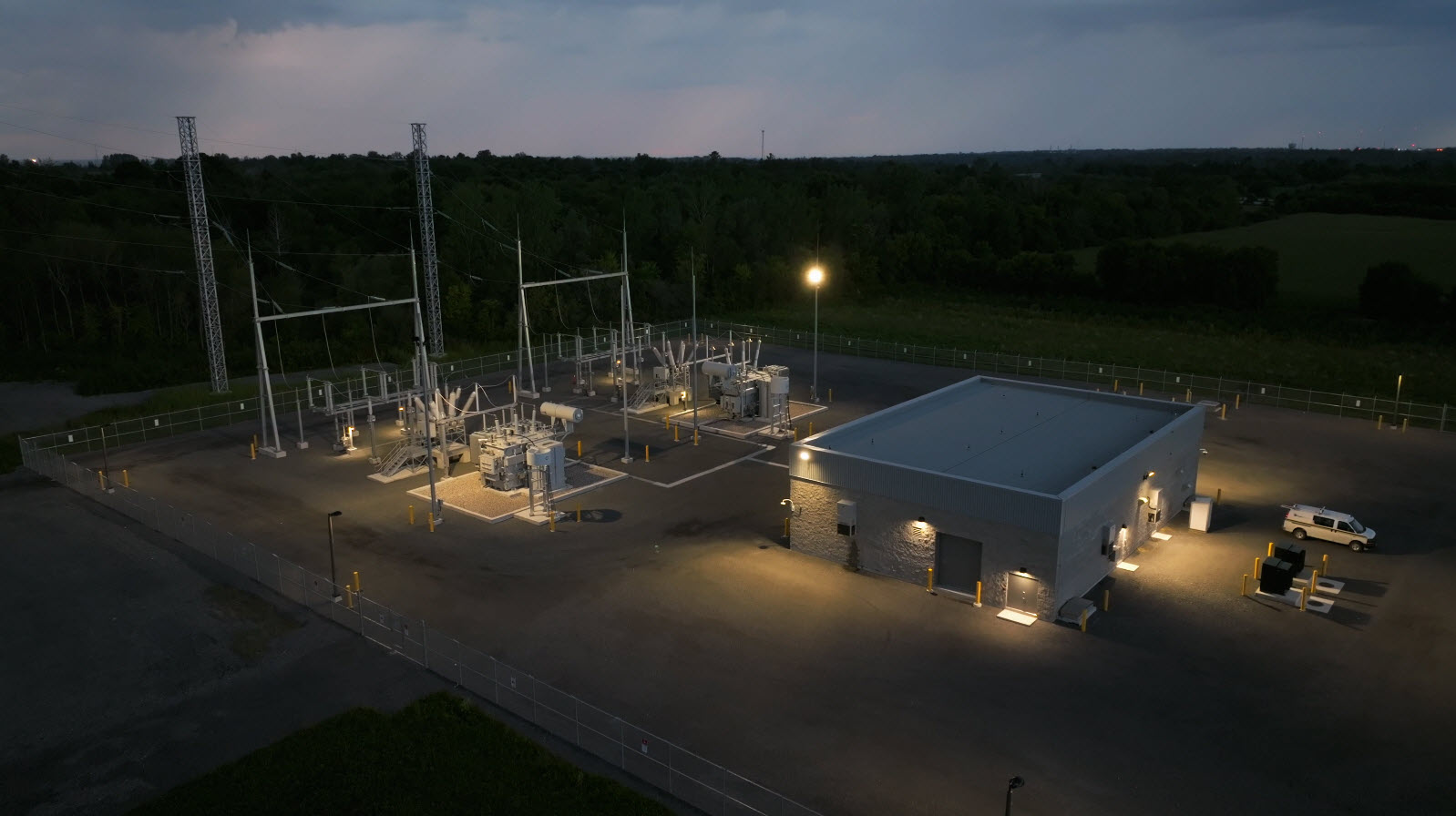Ninety-two substations power all of Hydro Ottawa’s customers across our 1,116 sq/km service territory. With a number of new stations in the planning, design or construction phase, that number is expected to grow over the next five years.
While building substations is nothing new for a local utility, the pace at which new stations are required throughout our service area, is. Until recently, Hydro Ottawa built a new substation every five to seven years. Now, we are on track to energize a new station nearly every year until 2030.
So, what’s changed, where will these new stations be located, and how will you be informed if one is planned for your area?
What’s changed?
Hydro Ottawa is embarking on the largest grid investment program in its history in order to support an unprecedented transition to an increasingly electrified way of life. As the local distribution company for the city of Ottawa and the village of Casselman, Hydro Ottawa plays a crucial role in transforming the local energy landscape to keep pace with what our customers need and expect.
In response to the electrification of heating and transportation in our community, Hydro Ottawa has commissioned an expert study on the potential impacts to our grid. The study will be completed this year and will help inform planned capital investments to 2030 (and beyond).
Some of the increased demand associated with customer service and connection requests is so large that Hydro Ottawa can't simply connect them to their nearby wires. We need to replace or upgrade those wires all the way to the substation. Sometimes that means increasing the size of the substation, or even building a new substation altogether.
For context, in 2023, Hydro Ottawa invested $56.9 million to keep the distribution system safe and reliable and $53.4 million on customer driven projects like building new infrastructure to meet their growing electricity demands.


What does a substation do?
A substation is an essential delivery checkpoint for electricity on the power grid while on its way to your home or business. The station’s transformers serve to reduce the voltage of electricity supplied from the provincial grid so it’s safe for you to use.
As the city grows outward and upward, we are always thinking ahead to balance safety, reliability, efficiency, and innovation. This involves considerations for upgrades to existing substations and the creation of brand new ones.
Upgrades can consist of installing additional transformers in order to supply more power to surrounding areas. New transformers provide redundancy by splitting loads under normal operating conditions. As demand for electricity increases and spreads, upgrades to existing substations in older communities are needed to manage the supply in a reliable way. We have numerous station upgrade projects underway, including our Richmond South station and Riverdale station, to name just a couple.
Brand new stations are constructed when city sprawl and demand significantly increases load requirements. Due to the complexity of building a new station, it can take months or even years to complete, so predictive planning is critical to meeting the growing needs of the city. Hydro Ottawa does this through a comprehensive 20-year Integrated Regional Resource Plan for the greater Ottawa area with partners, Hydro One and the Independent Electricity System Operator.
Where are the new stations?

Cambrian (Energized 2022)
The last municipal transformer station that Hydro Ottawa built is on Cambrian Road in the south-west end of the city near provincial highway 416. Originally identified in 2008, it was approved by the Independent Electricity System Operator in 2016 and became fully operational in 2022 after an extensive public consultation process. As Hydro Ottawa’s largest station, Cambrian can power 32,000 homes annually. But what makes it really stand apart is its 15-acre pollinator meadow; one of the largest in eastern Ontario.
Piperville (2026)
The proposed Piperville Municipal Transformer Station will be the first-ever low-carbon substation for Hydro Ottawa. It will support projected demand growth in the southeast part of Ottawa, and provide system redundancy in the event of severe weather. Hydro Ottawa is developing the project using low-carbon design and construction techniques, and is exploring the potential for adding renewable generation and electricity storage; setting a new standard for how we build substations going forward. We are just finalizing public feedback before we begin construction this year. It is expected to be energized in 2026.
Hydro Road (2027)
This proposed new station is unique in that one of its key features will be to support the City’s OC Transpo Zero-Emission Buses (ZEB) project. Located in the city’s southeast end just off Hawthorne Road, it will provide power for the city’s future fleet of 300 battery electric buses. Additional grid capacity is required to accommodate the new demand in the area. The public review and comment period for this project closed July 2024.
Mer-Bleue (2027)
Currently at the planning stage, this Orléans station near Mer-Bleue Road and Brian Coburn Boulevard will eventually replace the existing Bilberry station in the east-end area of the city. The Bilberry station has reached its end of life and will be decommissioned when the new Mer-Bleue station comes online. Notices and invitations to community information sessions will be sent to residents in the area before the end of 2024.
Greenbank (2028)
Also in the planning stage, this proposed south end station will likely be located around Greenbank Road and Hunt Club Road, and will support new development, as well as a planned expansion by a government agency in the area. It is expected that public notices and community information sessions will be held sometime in early 2025.
New Kanata North (2028)
Our final station in the planning stage has a proposed location in the northern part of Kanata near Morgan’s Grant and the Kanata North Business Park. This station will provide critical redundancy to other stations in Kanata as well as service new developments. Public notices and community information sessions are expected in late 2025.
How will you be informed about a new substation in your area?
Hydro Ottawa is committed to public consultation throughout the substation planning and construction process. This involves inviting residents, stakeholders, and Indigenous communities to multiple information sessions where they can learn about the project, ask questions, and provide feedback at various stages of the project. The consultation process includes a Class Environmental Assessment for Minor Transmission Facilities that outlines extensive fieldwork and findings, covering a wide range of environmental and social factors, including pedestrian surveys, socio-economic inventories, environmental wildlife and habitat surveys, Species-at-Risk surveys, and archeological and heritage assessments.
If you reside in the study area for any of our known substation projects, or one in the future, we will reach out to you directly so you can participate in our consultation process. This invitation is hand-delivered to your door to ensure no one is missed. Your voice matters.
Ottawa is evolving, and Hydro Ottawa is committed to powering that evolution. Strategically located substations are essential to meet the city's growing energy needs and support a greener future. We invite you to stay informed about upcoming substation projects and participate in shaping the future of energy in Ottawa when we are building in your area.
To find out what major projects are currently underway, visit our Major Projects page for more details.